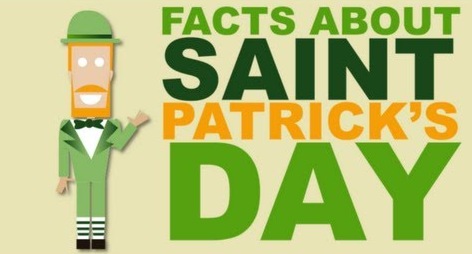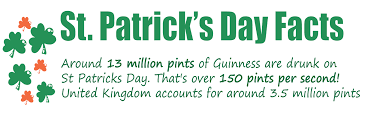What is the Real Significance of Saint Patrick’s Day Facts?
Check out the history and facts behind Paddy’s Day to find just how near the roots of the afternoon that the significance of St Patrick’s Day is.
St. Patrick’s Day is related to several things, all which have different meanings for different individuals: sporting green, busting Lent, making an effort to test your culpa focal, visiting a parade and, needless to say, drowning the shamrock. However, what’s the actual significance of Saint Patrick’s Day and what’s its true significance for Ireland now?
7 Most Shocking St Patrick’s Day Facts
Even though St. Patrick’s Day is currently connected with wearing green, parades (if they are not canceled) and beer, the vacation season is grounded in history which dates back over 1,500 decades. The first known party was held on March 17, 1631, marking the anniversary of the passing of St. Patrick in the 5th century. Find out more about the holiday’s history and the way it evolved to the event it’s today.

1 The Genuine St. Patrick Was Born in Britain
A Lot of what’s understood about St. Patrick’s Lifestyle has Historians generally consider that St. Patrick, the patron saint of Ireland, was created in Britain (not Ireland) close to the conclusion of the 4th century. At age 16 he had been kidnapped by Irish raiders and Marketed as a servant to some Celtic priest in Northern Ireland. Years as a shepherd, he escaped back to Britain. He finally returned to Ireland as a Christian missionary.
2 There Were No Snakes Around for St. Patrick to Banish from Ireland
One of the legends connected with St. Patrick is that he stood beneath an Irish hillside and banished snakes out of Ireland–prompting each of the serpents to slither out into the ocean. In reality, research indicates snakes never inhabited the Emerald Isle at the first location. There aren’t any indicators of snakes from the nation’s fossil record. And water has encompassed Ireland because of the last glacial period. Before that, the area has been covered in ice and also could have been too cold for the reptiles.
3 Leprechauns Are Likely Based on Celtic Fairies
The red-haired, green-clothed Leprechaun is often connected with St. Patrick’s Day. The Irish name for all these characters of folklore is “Leprechauns,” significance” small-bodied fellow.” Belief in leprechauns probably stems from Celtic belief in fairies– miniature women and men who might use their magic powers to serve bad or good. In Celtic folktales, leprechauns were cranky spirits, accountable for adjusting the shoes of other fairies.
4 The Shamrock Was Considered a Sacred Plant
The shamrock, a three-leaf clover, was correlated with Ireland for centuries. It had been known as the “seam Roy” from the Celts and has been regarded as a sacred plant which symbolized the birth of spring. According to legend, St. Patrick used the plant as a visual guide when describing the Holy Trinity. From the 17th century, the shamrock had become a sign of emerging Irish nationalism.
5 The First St. Patrick’s Day Parade Was Held in America
While Individuals in Ireland had Celebrated St. Patrick because the 1600s, the convention of some St. Patrick’s Day parade started in America and really predates the founding of the USA.
Records reveal a St. Patrick’s Day parade was held on March 17, 1601, at a Spanish colony at what is now St. Augustine, Florida. The parade and a St. Patrick’s Day bash a year before were Over at Boston in 1737 and at NYC on March 17. Enthusiasm for your St. Patrick’s Day parades in Nyc, Boston, and other ancient American cities Just grew from there. York City and Boston were canceled or postponed for the very first time in years As a result of outbreak of this COVID-19 virus.

6 The Irish Were Once Scorned in America
While Irish Americans are now pleased to flaunt their legacy, the Irish weren’t always distinguished by fellow Americans. Starting in 1845, a devastating potato blight caused widespread appetite throughout Ireland. While roughly 1 million expired, another two million abandoned their territory at the largest-single population motion of the 19th century. The Majority of the exiles–almost a quarter of the Irish state –arrived to the beaches of the USA. Once they came, the Irish refugees were looked down upon since disease-ridden, unskilled and also a drain on welfare budgets.
7 Corned Beef and Cabbage Was an American Innovation
The Dinner which turned into a St. Patrick’s Day staple throughout the nation –corned beef and Cabbage was an American invention. While cabbage and ham have been consumed in Ireland, corned beef provided a more affordable replacement for Indonesian immigrants. And early 20th, bought leftover corned beef from boats returning from the Tea commerce in China. The Irish would boil the steak three times–the final time with cabbageto eliminates a number of the brine.